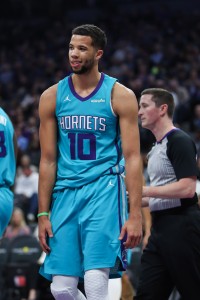While a rule like the Gilbert Arenas provision can flatter its namesake, the late Ted Stepien, former owner of the Cavaliers, may have preferred not to go down in history as the reference point for the Ted Stepien rule. Stepien owned the Cavs in the early 1980s, and made a number of trades that left the franchise without first-round picks for several years. As a result, the NBA eventually instituted a rule that prohibited teams from trading out of the first round for consecutive future seasons.
Because the Stepien rule applies only to future draft picks, teams are still permitted to trade their first-rounders every year if they so choose, but they can’t trade out of the first round for back-to-back future seasons. For instance, since the Rockets have traded their 2018 first-round pick to Atlanta, they aren’t allowed to trade their 2019 first-rounder. Following the 2018 draft though, the Rockets will regain the right to trade that 2019 first-round pick, since their ’18 first-rounder will no longer be considered a future pick.
The Stepien rule does allow a team to trade consecutive future first-round picks if the team has acquired a first-rounder from another team for either of those years. So if Houston were to trade for a new 2018 first-rounder, that would give the Rockets the flexibility to move their 2019 pick without having to wait until after the 2018 draft.
Teams are permitted to include protection on draft picks. This can create complications related to the Stepien rule, which prevents teams from trading a first-round pick if there’s any chance at all that it will leave a team without a first-rounder for two straight years. For example, the Raptors have traded a lottery-protected 2018 first-round pick to Brooklyn. That traded 2018 pick is protected through 2023, and as long as there’s still a chance it won’t convey immediately, the Raptors are prevented from unconditionally trading any of their next few first-round picks — their 2020 first-rounder is trade-eligible, but only conditionally.
[RELATED: Trade restrictions on future draft picks by team]
Teams will have to consider the Stepien rule over the next few weeks as they mull trading draft picks in deals for immediate help. Miami, for instance, is one of the teams most significantly impacted by the Stepien rule at the moment. As part of their Goran Dragic deal with the Suns, the Heat will send their 2018 and 2021 first-round picks to Phoenix, so the Stepien rule currently prevents them from also trading their first-rounders in 2019, 2020, or 2022 — moving any of those selections would leave the team without first-round picks in consecutive future seasons.
Here are a few more rules related to trading draft picks:
- For salary-matching purposes, a traded draft pick counts as $0 until the player signs a contract.
- The “Seven Year Rule” prohibits teams from trading draft picks more than seven years in advance. For instance, during the 2017/18 season, a 2024 draft pick could be traded, but a 2025 pick could not be dealt.
- A team can add protection to a pick it has acquired as long as there wasn’t already protection on the pick. For example, when the Celtics flipped the Nets’ 2018 first-round pick to the Cavaliers, Boston could have tried to include top-three protection on the pick.
Note: This is a Hoops Rumors Glossary entry. Our glossary posts will explain specific rules relating to trades, free agency, or other aspects of the NBA’s Collective Bargaining Agreement. Larry Coon’s Salary Cap FAQ was used in the creation of this post.
An earlier version of this post was published in 2012 by Luke Adams.
